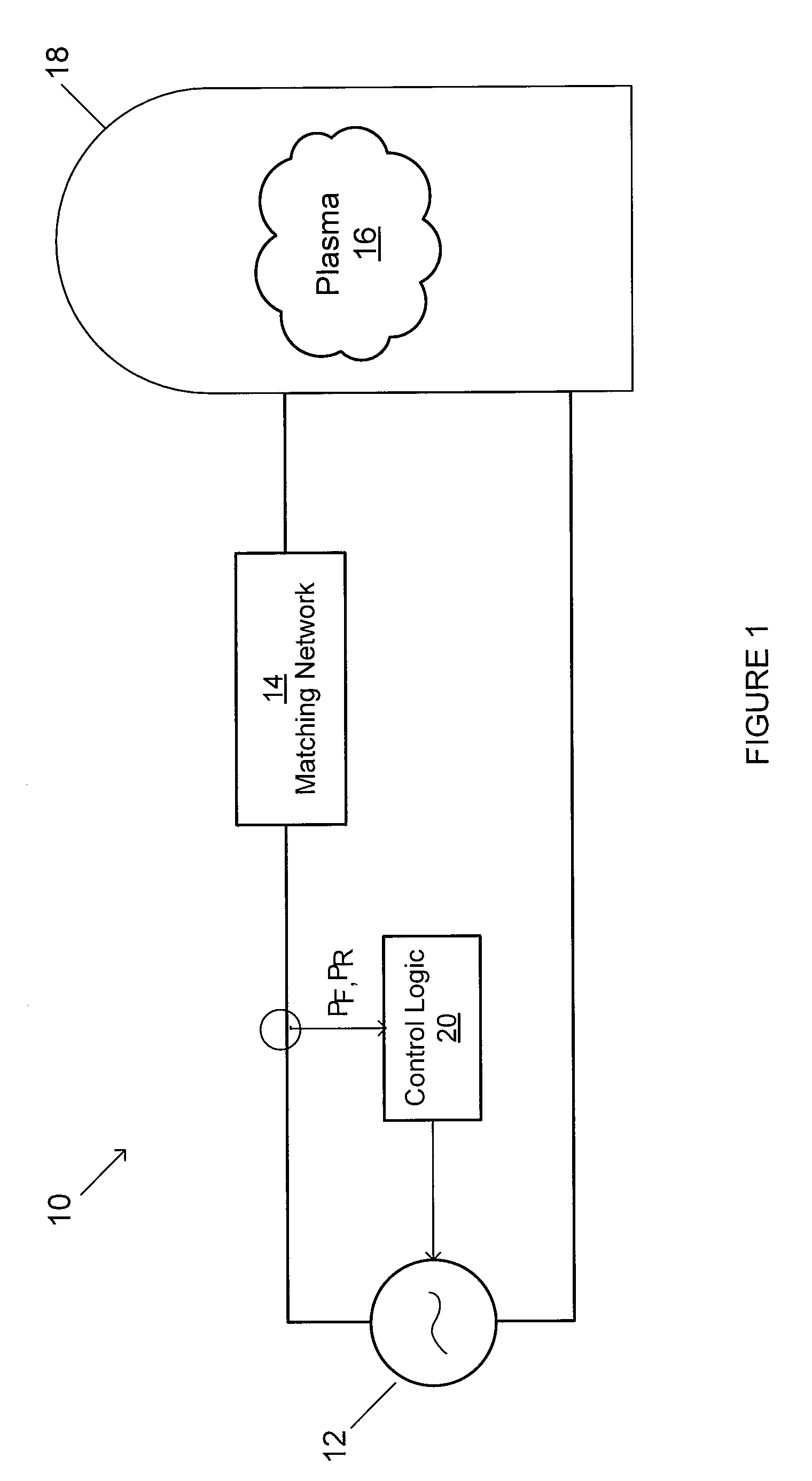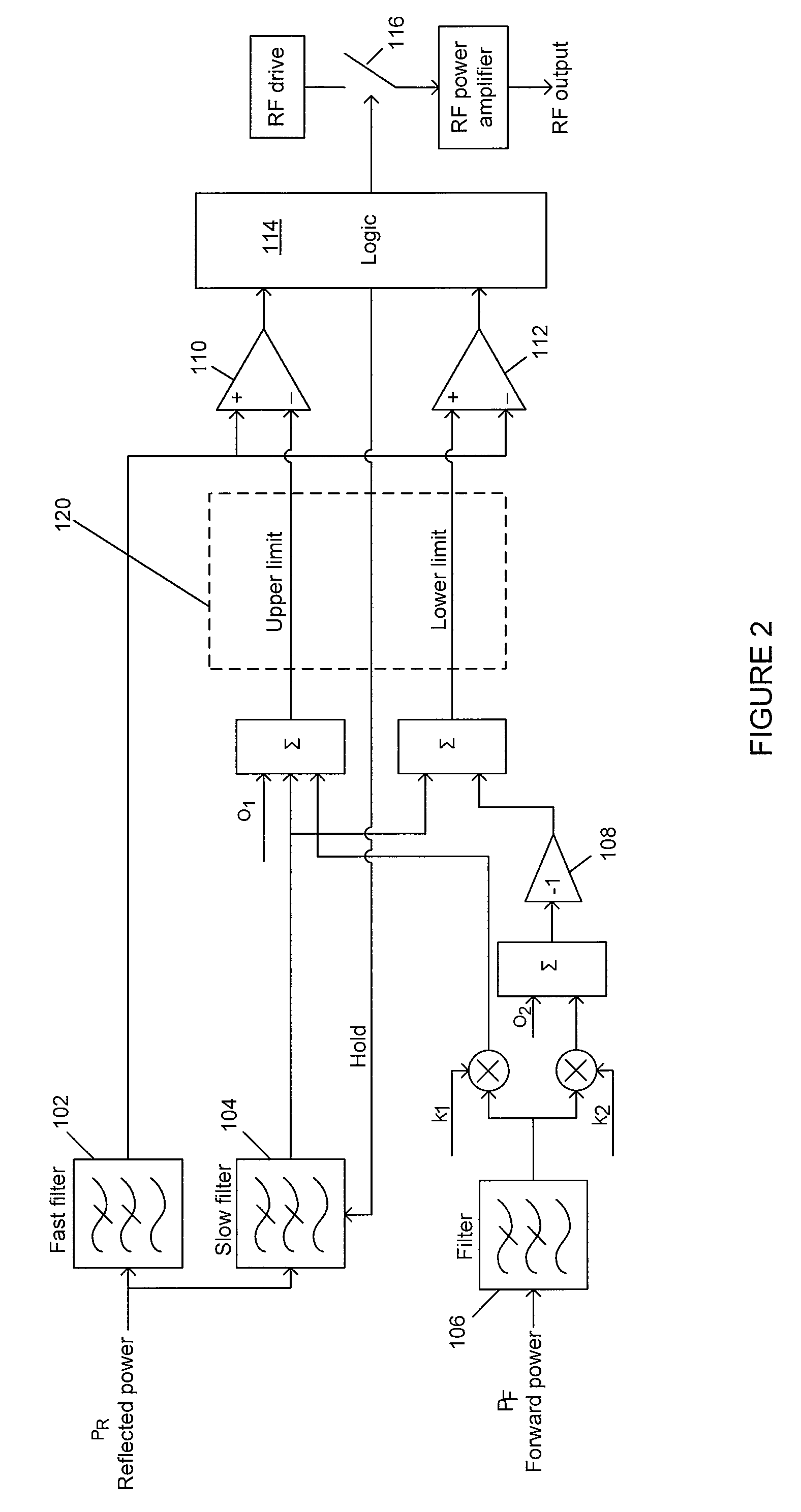Arc detection and handling in radio frequency power applications
a radio frequency power and arc detection technology, applied in the field of radio frequency power delivery, can solve the problems of not being able to detect and respond to plasma impedance changes, damage to the surface of a workpiece or even to the processing equipment itself, charge buildup and eventual electrical breakdown of the surface of dielectric films, etc., to achieve better yield, improve process quality and throughput, and improve sensitivity.
- Summary
- Abstract
- Description
- Claims
- Application Information
AI Technical Summary
Benefits of technology
Problems solved by technology
Method used
Image
Examples
Embodiment Construction
[0017]FIG. 1 illustrates a plasma processing system in accordance with one embodiment of the invention. Processing system 10 comprises RF power generator 12 that delivers RF power through impedance matching network 14 to a plasma 16 within plasma chamber 18. Instantaneous values of forward power PF and reflected power PR are measured at the output of generator 12 and communicated to control logic 20, which controls a disconnection circuit at the output of power generator 12.
[0018]FIG. 2 illustrates a process and circuitry for arc detection and handling in an RF power delivery application in accordance with one embodiment of the invention. Measurements of forward power PF and reflected power PR are filtered through filters 102, 104, and 106. Absolute offset values O1 and O2, and multipliers k1 and k2, are user-selected inputs that determine the sensitivity of the arc detection circuitry. The sum of offset O1 from slow-filtered reflected power and multiplier k1 applied to filtered for...
PUM
 Login to View More
Login to View More Abstract
Description
Claims
Application Information
 Login to View More
Login to View More - R&D
- Intellectual Property
- Life Sciences
- Materials
- Tech Scout
- Unparalleled Data Quality
- Higher Quality Content
- 60% Fewer Hallucinations
Browse by: Latest US Patents, China's latest patents, Technical Efficacy Thesaurus, Application Domain, Technology Topic, Popular Technical Reports.
© 2025 PatSnap. All rights reserved.Legal|Privacy policy|Modern Slavery Act Transparency Statement|Sitemap|About US| Contact US: help@patsnap.com



